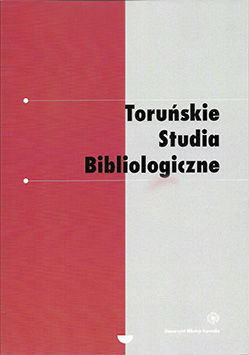Główne idee polskiej typografii funkcjonalnej lat 20. XX wieku na wybranych przykładach
Main Directions of Polish Functional Typography in the 20s of the 20th Century – Selected Case Studies
Author(s): Barbara KrasińskaSubject(s): Cultural history
Published by: Wydawnictwo Naukowe Uniwersytetu Mikołaja Kopernika
Keywords: Berlewi Henryk; grafika użytkowa; konstruktywizm; nowa typografia; plakat; Strzemiński Władysław; Szczuka Mieczysław; typografia funkcjonalna
Summary/Abstract: The 20s of the 20th century brought the need for a new graphic style and design. Futuristic literature and poetry made it necessary to create a new typographic layout. Utilitarianism art, “machine logic”, functionalism, a dialogue between art and the present, standardization and mechanization were topics discussed internationally. In Russia constructivism and suprematism were strongly represented, in Germany a new theory of the Bauhaus was created along with new typography. These theories found a fertile ground in Poland, where the concept of unison, “analytical purity” in terms of artistic experimentation, as well as functional typography were among the main goals of graphic design, including poster design. The 20s were also a time when nationalist tendencies in art were criticized, the ideal man was portrayed as an engineer who creates by himself and for whom art is created. In Poland these ideas were developed in circles gathered around such people as Henry Berlewi, Władysław Strzemiński or Mieczysław Szczuka. It was their typographic design that was setting an example and was a plastic model to be followed by designing in the spirit of “modernity” (see Sixth, the sixth «Buchumschlag» 1926 of Strzemiński, the “Albatros” almanac cover from 1923, posters: Have you read the latest issue of the “Road” monthly from 1922/1924, The little musician from 1924, a poster for the Automobile Austro – Daimler exhibition from 1924 by Berlewi, a poster for Hamlet from 1925, and Amnesty for political prisoners from 1926 by Szczuka). This paper presents some of the most prominent personalities of Polish functional typography of the 20s. It outlines their views and theories to present selected typographical projects neglected or overlooked by otherwise rich literature on the subject (e.g. Mieczysław Szczuka’s works). These are excellent examples of principles and rules of design in the spirit of typography of that time.
Journal: Toruńskie Studia Bibliologiczne
- Issue Year: 17/2016
- Issue No: 2
- Page Range: 9-29
- Page Count: 21
- Language: Polish

